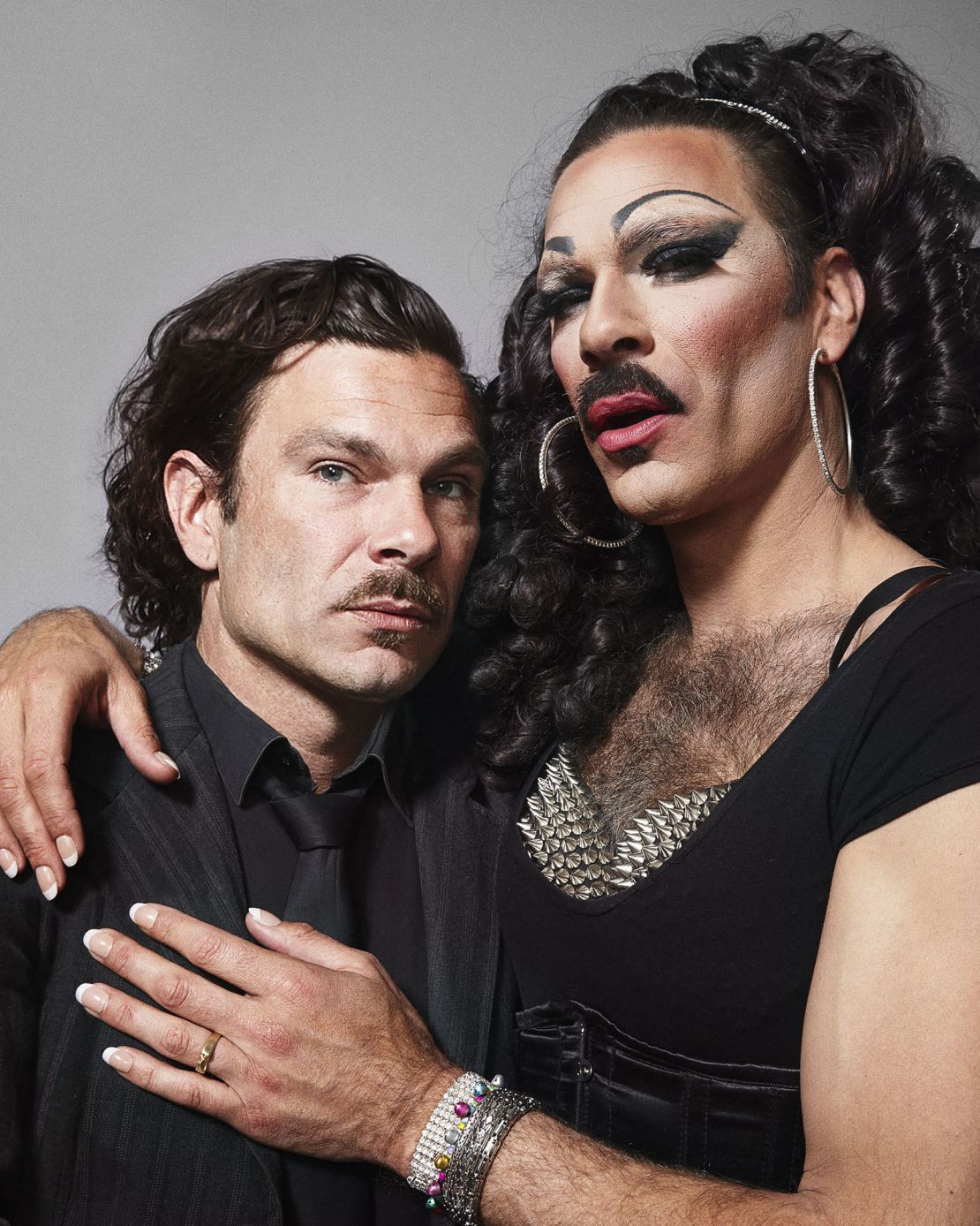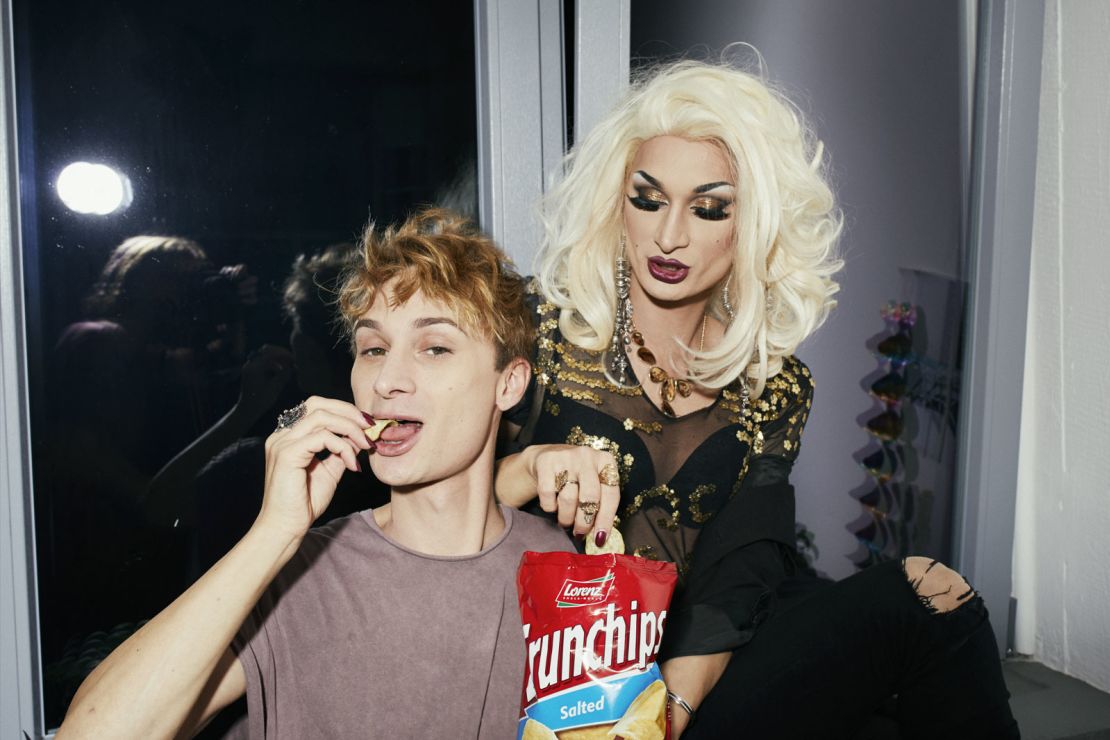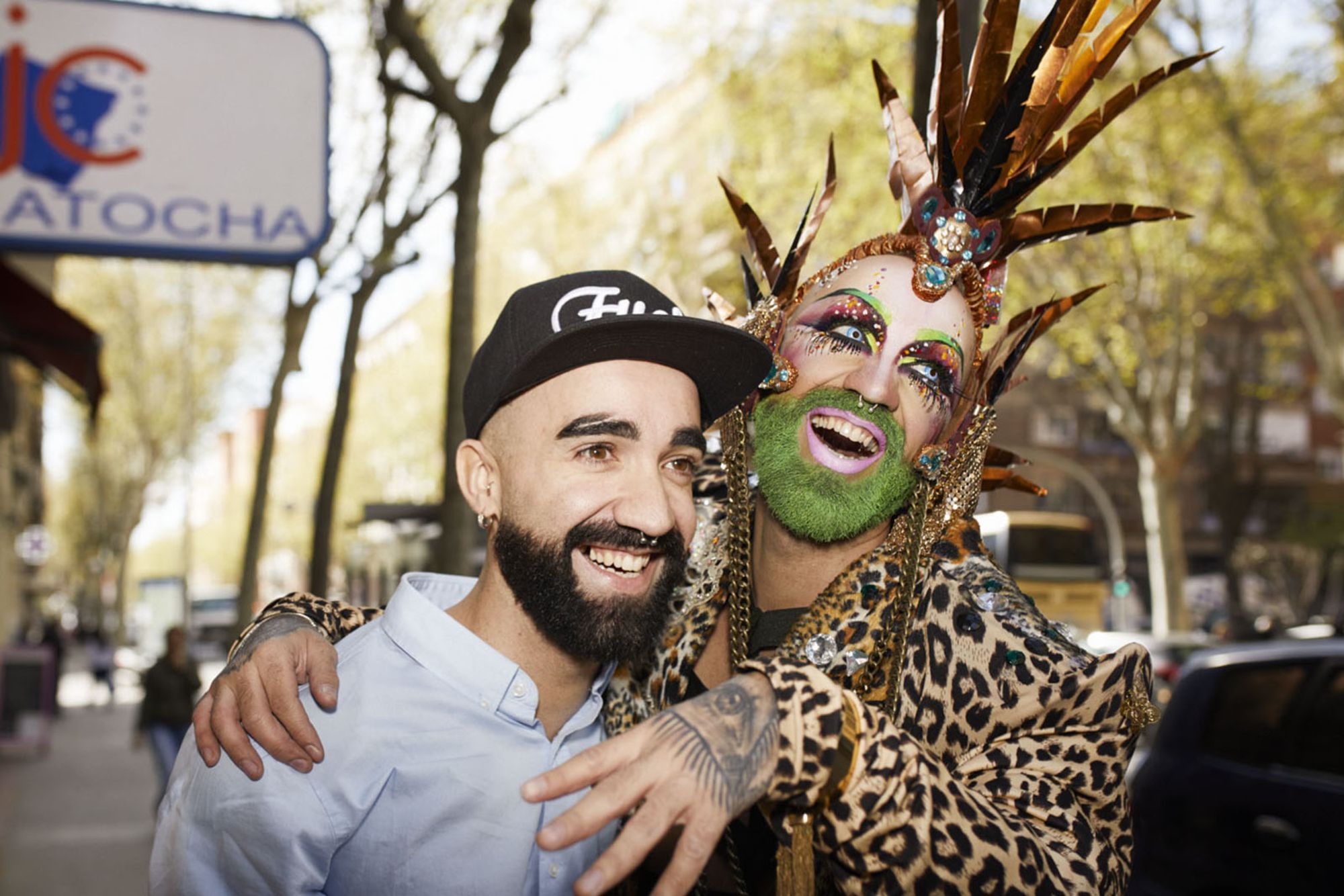In a typically intimate image from photographer Léon Hendrickx’s series “Kings & Queens,” drag queen Snorella is pictured sitting on the lap of Micha Schneiderberg, a hand laid protectively across his chest.
If the pair appear comfortable with one another, that’s because they are – they’re the same person.

Shot in Hendrickx’s Amsterdam studio, the image allowed Schneiderberg – who created his Snorella character five years ago – to see both sides of his personality together for the first time. He described the process as “almost spiritual.”
“When I saw the results, it moved me so deeply, because it’s me, with me,” he said in a phone interview.
“Your alter ego is a built-up persona. The longer you do it, the more it means to you. So when you see these two images combined in one photo, it’s as if your mind opens to form a reality you could never (otherwise) see.”
What began as an experiment between two friends has evolved into an ambitious photography project featuring dozens of drag queens from around the world. With the help of image editing software and body doubles, Hendrickx is able to show his subjects interacting with themselves in poignant and, often, humorous ways.
Léon Hendrickx's portraits show drag queens posing -- with themselves
“Putting people together is easy on Photoshop,” the photographer said during a phone interview on the opening night of his exhibition at the Photoville photography festival in New York. “But when you really make them touch each other – like (if they’re) embracing or caressing – it becomes harder.”
“There’s a regular guy behind every drag queen,” he added.
Exploring identity
The Dutch photographer began “Kings & Queens” in 2015, and has since shot images for the series in Berlin, Madrid and New York. Over the course of the last three years, he has witnessed how his subjects’ transformation isn’t purely physical.
“The drag queens are really used to being in front of the camera and being in the spotlight,” he said. “But when you photograph the boy … they don’t (always) know how to act or what to do.”

“A lot of guys do drag for show and to be outgoing,” Schneiderberg added, by way of explanation. “They might be a humble guy and then, in drag, like a super extravagant queen.
“When I’m in drag, I feel this persona coming on. People tell me that when they meet my drag persona, I’m a different person. And I feel it myself, but it’s so hard to describe what the differences are.”
As such, the images can be read either as an exploration of two different characters or a reminder that both are fundamentally the same. But Hendrickx is at pains to stress that the project is neither a political statement nor an attempt at activism.
It is, instead, an exploration of individual human identity – a topic also explored in his project “Will’s Multiple Selves,” in which the eponymous character is seen hanging out with and even fighting himself.

“I’m just photographing people the way they are,” Hendrickx said. “Drag queens are so exaggerated but anyone – every person – has their own alter ego.
“You could have a guy with three kids who wears short sleeves and flip-flops during the weekend – he puts on a suit and works at a bank during the week, and that’s an alter ego. It’s a basic human need.”


















